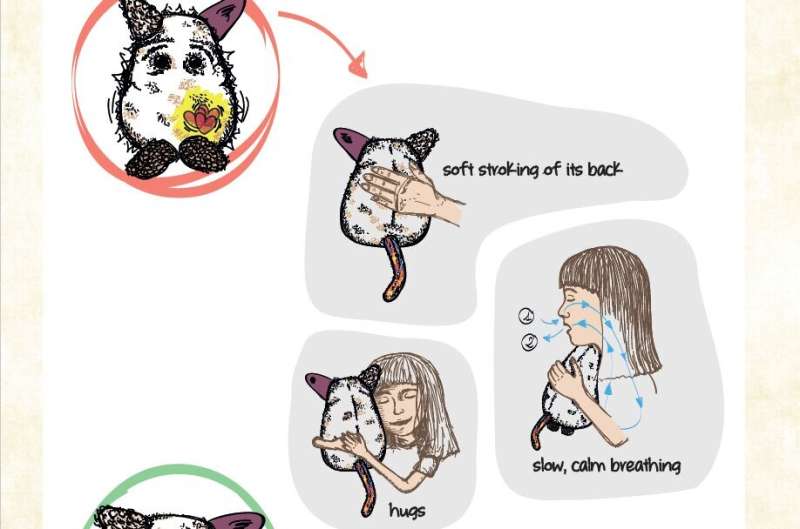A social robot that could help children to regulate their emotions
Source: Ingrid Fadelli
 In recent years, roboticists have developed a broad variety of social robots, robots designed to communicate with humans, assist them and support them in several different ways. This includes robotic toys and other robots designed to be used by children.
In recent years, roboticists have developed a broad variety of social robots, robots designed to communicate with humans, assist them and support them in several different ways. This includes robotic toys and other robots designed to be used by children.
Researchers at University of California- Santa Cruz (UCSC), King's College London, and a US-based company called Sproutel, and Committee for Children have recently developed a new socially assistive robot specifically designed to aid emotional regulation in children. This robot, presented in a paper pre-published on arXiv, resembles a small creature that a child might want to care for or cuddle.
"My research team at University of California Santa Cruz had been working on designing smart fidget devices and understanding use of fidget objects for a while and I met Petr Slovak (a key collaborator on the work in the paper) at a conference workshop," Katherine Isbister, one of the researchers who carried out the study, told TechXplore. "His interests were focused on social emotional learning and how to scaffold those skills."
Slovak, a lecturer and researcher at King's College London, thought that smart fidget devices could aid emotional learning and emotional regulation in children. He thus started collaborating with Isbister, as well as other students and researchers at UCSC, to develop a robot or device that could be used by children to regulate their emotions.
The robot developed by Isbister, Slovak and their colleagues looks a bit like a plush toy or stuffed animal. This 'robotic stuffed toy' responds to a child's touch, calming down and reducing its movements as a child gently caresses it or hugs it.
Design iterations of the creature (left is initial UCSC research prototype, center is UCSC prototype that was deployed in field studies, right is Sproutel commercial product). Credit: Isbister et al.
"The child can tell or assume how the creature 'feels' through haptics," Isbister said. "When the creature is nervous, it has a rapid heartbeat, but as it calms down it also slows down, then turns to a purr. This interaction helps the child to self-soothe, because they are using fidgeting actions that can contribute to calm and they are getting 'outside of themselves' by focusing on someone/something else."
While there are several fidgeting objects or toys on the market designed to help children to calm down, these objects are typically static and do not respond to a child's touch or enable interactions such as the one produced when a child interacts with the social robot created by these researchers. This makes the new robot unique and sets it apart from previously created fidgeting devices for children.
| }
|